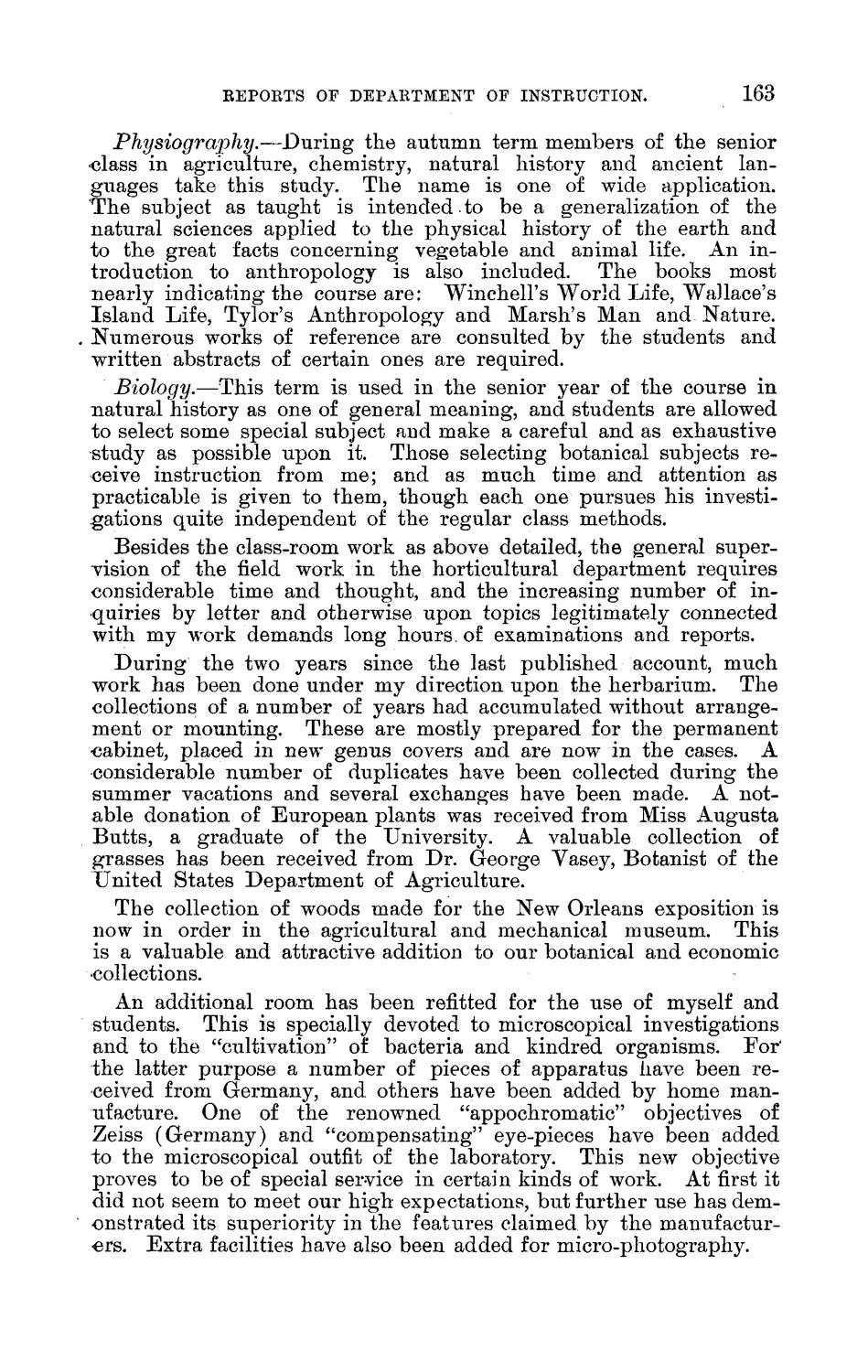| |
| |
Caption: Board of Trustees Minutes - 1888
This is a reduced-resolution page image for fast online browsing.

EXTRACTED TEXT FROM PAGE:
REPORTS OF DEPARTMENT OF INSTRUCTION. 163 Physiography.—During the autumn term members of the senior class in agriculture, chemistry, natural history and ancient languages take this study. The name is one of wide application. The subject as taught is intended to be a generalization of the natural sciences applied to the physical history of the earth and to the great facts concerning vegetable and animal life. An introduction to anthropology is also included. The books most nearly indicating the course are: Winchell's World Life, Wallace's Island Life, Tylor's Anthropology and Marsh's Man and Nature. Numerous works of reference are consulted by the students and written abstracts of certain ones are required. Biology.—This term is used in the senior year of the course in natural history as one of general meaning, and students are allowed to select some special subject and make a careful and as exhaustive study as possible upon it. Those selecting botanical subjects receive instruction from me; and as much time and attention as practicable is given to them, though each one pursues his investigations quite independent of the regular class methods. Besides the class-room work as above detailed, the general supervision of the field work in the horticultural department requires considerable time and thought, and the increasing number of inquiries by letter and otherwise upon topics legitimately connected with my work demands long hours, of examinations and reports. During the two years since the last published account, much work has been done under my direction upon the herbarium. The collections of a number of years had accumulated without arrangement or mounting. These are mostly prepared for the permanent cabinet, placed in new genus covers and are now in the cases. A considerable number of duplicates have been collected during the summer vacations and several exchanges have been made. A notable donation of European plants was received from Miss Augusta Butts, a graduate of the University. A valuable collection of grasses has been received from Dr. George Yasey, Botanist of the United States Department of Agriculture. The collection of woods made for the New Orleans exposition is now in order in the agricultural and mechanical museum. This is a valuable and attractive addition to our botanical and economic •collections. An additional room has been refitted for the use of myself and students. This is specially devoted to microscopical investigations and to the "cultivation" of bacteria and kindred organisms. For* the latter purpose a number of pieces of apparatus have been received from Germany, and others have been added by home manufacture. One of the renowned "appochromatic" objectives of Zeiss (Germany) and "compensating" eye-pieces have been added to the microscopical outfit of the laboratory. This new objective proves to be of special service in certain kinds of work. At first it did not seem to meet our high expectations, but further use has demonstrated its superiority in the features claimed by the manufacturers. Extra facilities have also been added for micro-photography.
| |